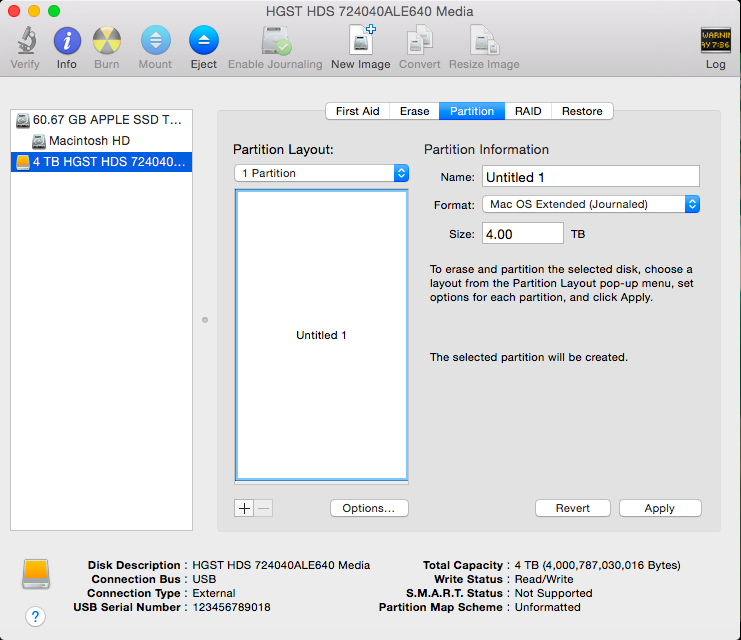

- #MAC OS DISK UTILITY SSD DRIVES MAC OS#
- #MAC OS DISK UTILITY SSD DRIVES INSTALL#
- #MAC OS DISK UTILITY SSD DRIVES PRO#
- #MAC OS DISK UTILITY SSD DRIVES FREE#
Also, I have no other drives attached at all while trying to do this High Sierra install on an SSD.

Stuck.īy different controllers, I should have said I've tried most of the different SATA ports (not including the two Marvel ports, will try them later). The SSD should now be visible on your desktop with the new name you gave it, as well as during the drive selection menu if your run an OS X installer. The drive will now be partitioned and formatted. But then putting it back into the High Sierra Installer setup, Disk Utility would again show it as "uninitialized". Verify that the selected format has defaulted to 'Mac OS Extended (Journaled)'. So, putting the SSD back into a 10.12 system, I could erase and rename it "High Sierra", thereby making it initialized. At that point the SSD would show up in the High Sierra Installer's Disk Utility, but only as an "uninitialized" disk, with no way to initialize it from within the High Sierra Disk Utility - it would keep saying "erase failed" due to not being able to read the drive's last block (or something to that effect). The little progress I did make was exactly what aol had suggested - that I format the SSD on a different mac running 10.12. But it runs Sierra 10.12.x flawlessly, for what that's worth.īy different controllers, I should have said I've tried each and every SATA port on the motherboard. Yes, I agree, this is an older motherboard (Z68MX-UD2H) and it's also running a legacy (nonEFI) F13 bios. Bad news is I'm not making a ton of progress.
#MAC OS DISK UTILITY SSD DRIVES MAC OS#
That all seems to have worked.Īs this seems to be a common issue for both Mac OS and Windows users for the newer SSDs, it is curious that manufacturers do not ship the new SSDs pre-formatted (whether in Mac OS Extended, NTFS, FAT32 or whatever) as a formatted disk will at least be recognised as a disk when first connected to either Mac OS or Windows.Building a CustoMac Hackintosh: Buyer's Guide I then restored to the new SSD from most recent Time Machine backup on an external disk. For uninitialized external hard drive on mac, you can use Disk Utility as the first aid to kill this problem.
#MAC OS DISK UTILITY SSD DRIVES FREE#
mine is 500GB so it came up as an unnamed 500GB disk).Īfter running eraseDisk (which takes about 5 seconds) the SSD was then "recognised" by Mac OS as a disk. Disk Utility is the free macOS program designed to manage and repair both internal & external hard drive, also, you can utilize Disk Utility to format and combine disks. When running the "diskutil list" the blank SSD just comes up as an unnamed, unformatted drive (key is to check it is the correct disk by looking at the capacity ie.
#MAC OS DISK UTILITY SSD DRIVES PRO#
Installed the "blank" SSD into the MacBook Pro, booted MacBook Pro into Recovery mode and then used Terminal prompt to format the SSD using the diskutil eraseDisk script. In the end, I did what anrah has mentioned above.

I also tried it on another notebook running Windows 10, and it was not recognised as a disk on Windows - when i plugged the dock into the Windows notebook, a message came up identifying it as a faulty USB device, but I could not see it as a disk in Disk Management on Windows. Put the new SSD in the dock, connected dock to MacBook Pro, but the SSD was not being recognised at all in Finder or in Disk Utility. Now a new Partition will appear, and you can change the size according to what you need. You should see two options: First Aid or Partition. Select your drives as the destination and install Installing a SATA Drive as a Storage Unit - 10.11 Physically install the drive into the Mac. In Disk Utility, select your Mac’s internal drive (or an internal SSD). The original HDD was still working (but painfully slow), so i had intended to use a SATA III to USB3.0 dock to clone the HDD to the new SSD prior to removing the old HDD and installing the SSD. Click on Disk Utility and select Quit Disk Utility. I had the same issue - bought a new Samsung EVO 860 SSD for my early 2011 MacBook Pro 13 inch running OS X Yosemite.


 0 kommentar(er)
0 kommentar(er)
